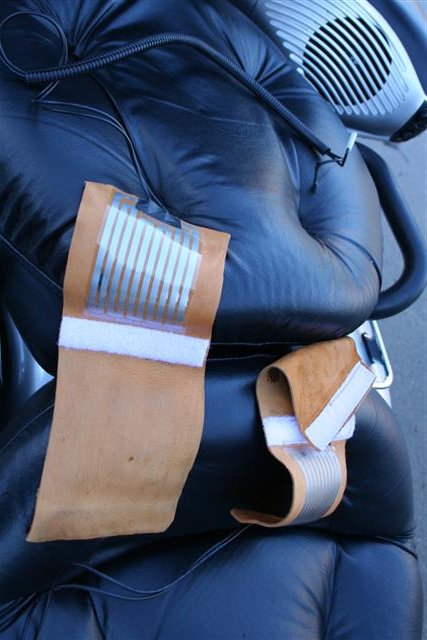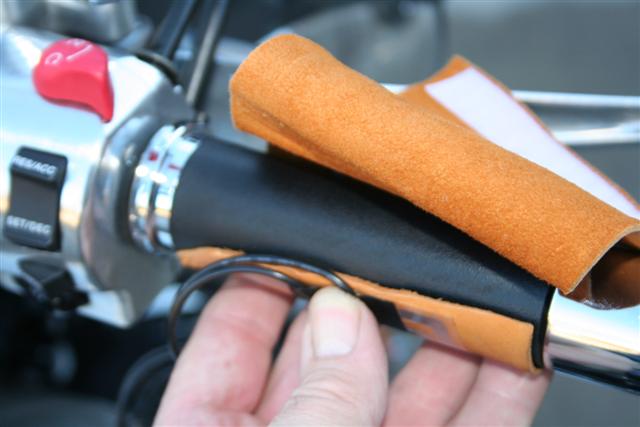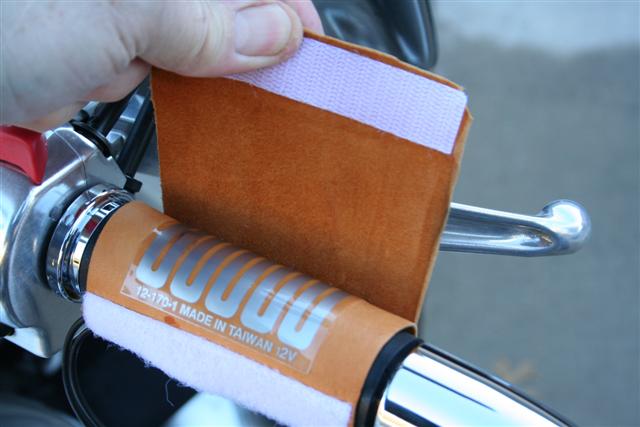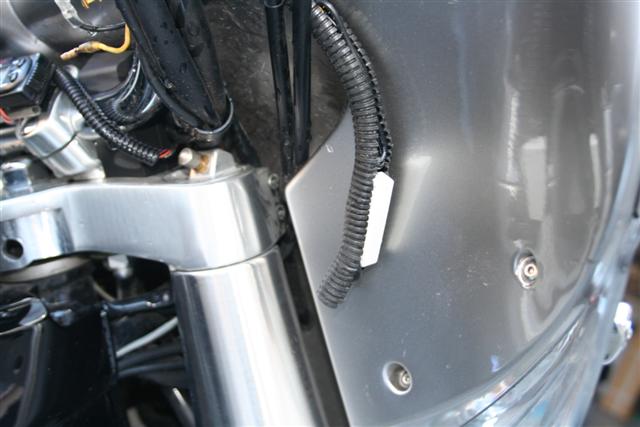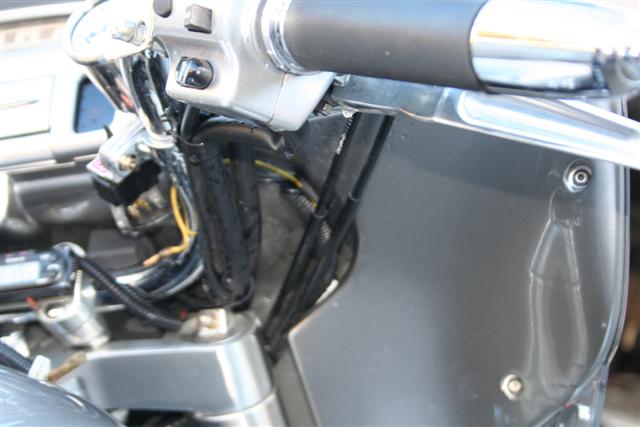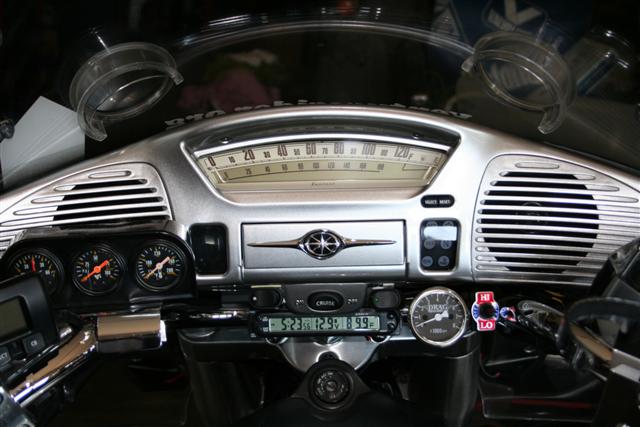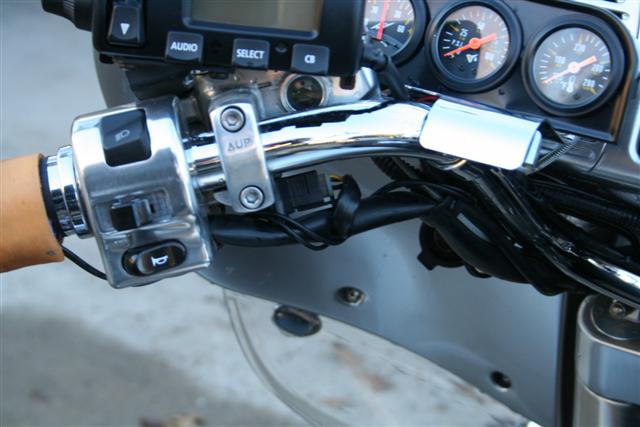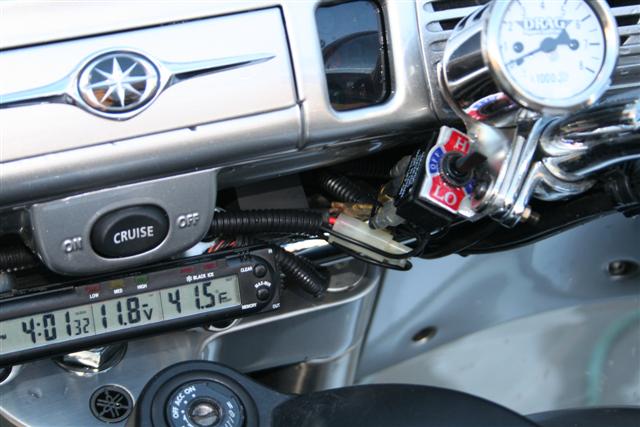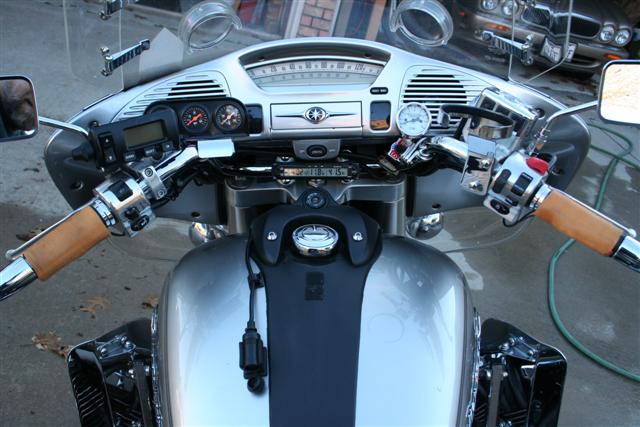Search the Community
Showing results for tags 'heaters'.
-
Note: This post is kinda long, but not too technical(except for the very end). There has been a lot of discussion in the past about the amount of reserve electrical capacity on an RSV for accessories, although most of the detailed facts were BC and no longer available for review. Some folks have glibly stated that the RSV has "lots" of extra electrical power available (with which I completely DISagree). So I thought I would publish some real world observations without a lot of stats to interpret. My 2005 QuickSilver has quite a few added lights, but with the exception of 4 small 3 watt instrument bulbs, all of them are LEDs, so they do not significantly increase the total load. My Driving lights are stock Yamaha accessories with original bulbs. I have both an ammeter (which allows me to see absolute proof if current is going in-to or out-of the battery at any moment, and a digital volt meter that reads to the tenth of a volt. I also have a tach. Most of you know that these bikes have four individual carb heaters, 15 watts each, for a total of 60 watts, which is a significant load. I don't know the trigger temp for the heaters, but it seems to be around the low 60s. The thermal switch is under the rear battery covers, so engine heat causes them to be shut off after warm-up unless the temp is quite a bit lower. When trying to figure out how much extra load you can add to an RSV, you need to factor in this 60 watt load if you are going to be riding in any cool or cold weather. Obviously important if you are going to use heated clothing! To recap, the electrical load on my bike is almost stock. I am experimenting with a set of grip heaters that pull about 2 amps/25 watts. I know they are not malfunctioning because they are wired through a 3 amp fuse which has not blown. Today, the temp was right around 30 degrees as I headed to work - cold enough to guarantee the carb heaters never shut off from engine heat. I ride about 25 miles, so this is far enough to ensure the current drain from starting the bike is completely replaced by the time I get to work, giving me the opportunity to observe the charging system both with a battery taking light charge, then a fully charged battery. Bottom line: with the driving lights on and the grip heaters on but headlight on low beam, the RSV can just barely handle the charging requirements of a normal battery in good condition at engine speeds above 1,800 RPM. Turning off the driving lights (total load reduction of 70 watts) makes a BIG difference. Below 1,800 RPM with driving lights and grip heaters on, the ammeter shows the charging system cannot handle the load and the battery is discharging. Hitting the brakes dramatically increases that discharge, and brakes with turn signals even more. This means the RSV has very little practical reserve charging capacity during cold weather unless you turn off the driving lights! Here are the technical details to go with those observations: At high idle after starting (about 1200 RPM, while the battery is trying to take a charge, with lights and grip heaters but no brakes or signals), the system voltage reads only about 10.9 volts, and the ammeter shows the battery is discharging. Raising the RPM close to 2,000 pushes the voltage up to 11.7, and the ammeter shows 0, meaning that the charging system is handling all the lights and heaters, but nothing (or only minor amount) is left to recharge the battery. Over 2,000 RPM shortly after starting (all conditions the same as above), the system voltage raises to about 12.3 and the ammeter begins showing a slight current flowing into the battery. After the battery is fully recharged, the system voltage at idle with lights and grip heaters but without brakes or signals is about 11.9, and the ammeter still shows a slight discharge. Hitting the brakes at idle drops the voltage to 10.9. Fully recharged battery with lights and grip heaters on, normal cruising RPM, the system voltage registers about 13.2. With a fully recharged battery, turning off only the grip heaters at idle pushes the voltage back up to about 12.8, and turning off the driving lights gets it all the way back up to about 13.5.This test is admittedly unscientific, and all the voltages were based only on memory from this morning's ride (not carefully written down under precise conditions), but I hope that information at leasts gives you something to base your decisions on when deciding on additional accessories. Good luck, Goose
-
Does anyone have any experience with these types of heaters. They claim they are 40% more efficient than the regular baseboard heaters thus using less power.My question is how efficient do they work and do they use a lot less power as they claim. I was thinking of using in the rec room as a supplememtal heat. House has a gas furnace.Comments please. Here is a link to the heaters http://www.costco.ca/Dynamic-Infrared-Quartz-Heater.product.10395019.html
-
I have been riding year-'round since the late 60s, and I have never had grip heaters or used electric clothing. As I get older, however, I am finding that the painful fingers when the temperatures drop below 30 are less acceptable, so this year, I started experimenting with grip heaters on the RSV. I really like the stock grips on QuickSilver, so I didn't want to just replace them with heated grips; that left either wrap-around heater covers or the under-grip heat strips. I first ordered a set of Oxford HotHands wrap-arounds. These are specifically labeled for use ONLY on 1 7/8" bars, as they will make the grips too large when put over grips on 1" bars. I decided to ignore this and try them anyway since I have very large hands. Turns out, we are both right. The HotHands are quite thick, and when put over the RSV grips, they feel overly large. I was easily able to get used to them, but most people probably wouldn't. In addition, the HotHands only have one temperature - High! To modulate the heat, the only choice is to turn them off and on periodically. My next try was to order a heated grip kit designed to install underneath existing grips. These consist of self-stick mylar sheets with heating elements bonded to the surface. The ones I ordered use a dropping resistor and two position switch to provide low and high heat options. More on the resistor later. Before I tried installing the heater kit as it was designed, I wanted to try and make my own set of grip wraps that could be removed easily when not needed. First, I chose to use buckskin, since I had it available and I thought the deer skin grips would be comfortable and functional. Although the buckskin worked very nice, I think rubberized nylon or canvas would have been a better choice. With the leather, I am concerned about the long-term effects of water, and when washing the bike I have been either wrapping the grips in plastic or removing them. Here's a picture of the heat strips and Velcro on the buckskin: [ATTACH]5015[/ATTACH] [ATTACH]5016[/ATTACH] [ATTACH]5017[/ATTACH] Important: If you are going to make a set of wrap-around heaters like this, you need to be careful to get the kind of elements with the SAME amount of heat on BOTH. Many sets made for motorcycles have one that heats a lot more to compensate for the damping effect of the cold metal bar directly against it on the left side. The dropping resistor is a bit of a problem - these get HOT when the grips are on low, hot enough to burn your fingers. There is at least one other brand of grip heater kit available that uses two separate heating circuits instead of the resistor, and I would use those in the future instead of the more common type with the resistor. I used some plastic wire wrap to hold the excess wire and the resistor (it came all soldered together), and then just stuck the wire assembly down behind the throttle cables and the fairing. (note - after using these for a year, just having the resistor and wires stuffed between the throttle cables and the fairing as shown in the picture has worked perfectly - the heat from the resistor has not damaged anything.) [ATTACH]5018[/ATTACH] [ATTACH]5019[/ATTACH] Finally, I just wrapped the wires from the grips once around the existing bar wire bundle and routed the wires from the left grip and the power plug through more of the plastic wire wrap across the front of the handlebars. The tach mount made a convenient place to mount the switch. I am currently powering these from the power plug in the fairing, but will permanently wire the switch next time I split the fairing. [ATTACH]5020[/ATTACH] [ATTACH]5021[/ATTACH] [ATTACH]5022[/ATTACH] I am quite happy with this solution and think this is what I will stay with! Goose UPDATE - one year later: I have used these grip heaters for two winters now, and I love them. In November we took a weeks ride up to Pigeon Forge, Tennessee, and the weather for three days all the way there was low 30s and solid rain. Of course, the buckskin grip heaters got soaked, but that just made them work even better, as the water absorbed the heat and kept my hands "steamy" warm. Even when my winter gloves got so wet that just making a fist would cause water to stream out of them, these grip heaters were too warm to leave on Hi very long. After the grip heaters dried out, they are still in perfect shape. One of the things I like most about them is that I only have to have them on the grips when really needed. Here is an updated picture of the dash and location of the switch between the tach and the right handle bar. [ATTACH]14364[/ATTACH]
-
Again, thanks for all the help yesterday. I got the wires spliced and bought a 50amp toggle switch as per the tech. library. Question is, I had grip heaters and already have a toggle switch mounted on the plastic cover over the gas cap. I have no idea how many amps it is? It was mounted to heat my grips and had both a low and high setting. I no longer use the heaters and have removed them, but left the switch. Can I us this toggle switch instead of mounting another? Do I really need a 50 amp switch?
-
Will it hurt anything to take the carb heater fuses out? Something is draining my new (6 months old) battery. A friend who had a YAMAHA 1100 said his was doing the same thing and he traced it to the carb heaters. He took the fuses out and all was well afterwards.
-
Latest add-on to my 05 midnight venture. Here is my write up on the install with some pics. Installed grip heaters made by Symtec (www.symtec-inc.com) (pic 1). Purchased from http://phatperformaceparts.com for $39.95. After I removed the throttle grip and seen the ribs under the rubber grip (pic 2) had to carve of the ribs off the plastic throttle sleeve in order to attach the heater. Used a box cutter to cut them off, they came off pretty easy. Once I had them removed, attached the heater with the wires at the right position, did not glue the heater as the instructions called for (pic 3). I re-installed the grip over the heater very carefully. The Clutch grip (pic 3a) was a little easier, did have to trim some off the chrome plastic end (pic 3b) to allow the wired end of the heater to fit on the bar. Attached the heater to the bar and slipped the grip over the heater and bar. Wires were long enough to route down the handlebar to the sides of the under the tank. Left some slack on the throttle side(pic 4) to allow movement of the throttle. I removed the tank and seat in order to finish wiring, I installed a relay at the battery area in order to connect to my switch control accessory switch (pic 5) wire which is mounted on left handlebar. I installed this a year ago, purchased from http://www.cruisercustomizing.com It has two push locking switches Top- my red LED lights under bike, Lower- grip heaters, they have a red LED to indicate that they are on. The switches are on an un-switched 12v from the battery. I installed a three position switch on the tank chrome cover(pic 6) for the HI/OFF/LO control, wired the three wire switch to a three pin plug in order so it can removed (pic 7). The three pin connector has 12v from relay, HI & LO wires from heaters. I connected the ground wires from the heaters to a bolt on the frame. I also installed a fuse holder on the 12v from the battery to the relay. They recommend a 3 or 4 amp fuse. I have a 3 amp so far works good. From the first I turned the heaters on, they warmed up pretty fast. Have used them on the cool mornings we have had lately. Wish I would have had them installed before the cold weather hit. I have used them with my regular summer groves and the winter leather groves, great so far. The temperature here is going back up, so LO has been good for now. Time will tell how long these heaters will last; one point for failure will be the wires where they connect to the heaters, especially the throttle side. Luckily we don’t need them very much down here. But since I ride all year round, hope it will make the cold ride into town and back home nicer when I am on the late shift this time of year. My hands were the only parts that were feeling the cold. Hope this write up shows enough. It was fairly easy, about an hour and a half to complete.
-
Well it looks like I need a larger stator..... I only have the yamaha passing lamps and a set of Motolights and the bike cant handle it... Drains the battery.... if I turn off the 55 watt Moto lights I could save the 8.3 amps... but I bought them to be seen....... I was going to pull the plug on the carb heaters, but this is wisconsin......I ride until it snows...never too cold with the buckeye stator I hope to have more than enough power
-
Thought I'd give y'all a little first hand observation on the operation of the RSV carb heaters. Most anyone with an interest is this subject already knows that the four carb heaters pull a combined 60 watts of electricity, the equivalent of the stock driving lights. Considering the limited extra power output of our stock charging system for things like heated clothing and such, reclaiming that 60 watts is an oft-discussed issue. But the one thing we have never really discussed is just how often and how long those carb heaters are actually on. I added a cutoff switch last year to allow me to manually shut them off if I ever wanted, and I also added an LED to let me see just when they were really on. Problem is, I honestly never remembered to actually check it anytime it would have been of value! Well, when several of us were up in Palo Duro Canyon in the Texas Panhandle this weekend, I finally had a good chance to check it out and actually remembered to do it. This discussion is NOT about the technical specifications of when the thermostat triggers the heaters to come on and go off - you can find that in the shop manual. This is about real world observation of when they are REALLY on and when you might care. I found that when the temperature is 35 degrees, the carb heaters will stay on for about 30 minutes when doing low-speed and city type riding. After about that long, the combined heat from the engine and that right rear exhaust pipe (real close to the heater thermostat) will cause them to go off and stay off (PROVIDED you continue riding in the same conditions). BUT, at highways speeds (for this test it was anything above 60 MPH), the constant blast of cold air around the bike will KEEP THE CARB HEATERS ON CONSTANTLY. If you slow down while riding through a town, they will go off, but shortly after you get back up to speed, they come right back on. As the temperature approaches 40 degrees they will go off and stay off, even while cruising at 70 MPH. So, bottom line seems to be that the value of disabling the heaters to reclaim that extra electrical power will completely depend on your type of riding and the lowest outside temperatures in which you might ride. If you never or rarely venture out on two wheels when the temperatures are below 40 degrees, you can pretty much just ignore the carb heaters - they won't be on long enough to make much of a difference for you, even if you are pushing the limit of the available electrical power. Just half an hour or so of extra drain won't make much of a difference UNLESS that is about as long as you ride each time (such as only riding to and from work instead of on a long trip). However, if you tend to ride below 40 degrees, you really should think about putting in a switch. I think the most important advice I would give anyone who has concerns about the electrical capacity on these bikes is to add a digital volt meter. I have discussed the benefits and limitations of both volt meters and ammeters in some older threads, and although neither of them alone will let you diagnose the condition of both the battery and the charging system, the volt meter alone WILL suffice to give you a heads-up when you are on thin ice. In short, if all is good, the voltage should ALWAYS be over 13.0 volts while above idle. If you see it staying at anything below 12.9 volts while riding, either your battery is on it's last legs, or you have more electrical load than your charging system can handle (while having to charge the battery too). Goose BTW - as I have stated in many other posts over the years, from my own personal measurements, the stock RSV with Yamahaha riding lights (only 30 watts each) and carb heaters on is already at max load if you are using the audio system and CB too. There just ain't nuthin left for anything else but maybe a few LED lights. Some people claim to have been using 55 watt driving lights and heated clothing for years with no problems - good for them, but it ain't so on the two RSVs I have owned. Without the proper gauges you can THINK everything is fine, but you are slowly destroying your battery. And not even "slowly" if the bike is usually run for less than an hour each time you start it! If you don't have the gauges, but still want to know if your battery is really up to snuff, just use a decent digital volt meter and touch it to the battery terminals after the bike has been sitting overnight (any reading within 3 hours of the last ride will be invalid due to a superficial "float" charge). If the battery is not at 12.9 volts, it is NOT fully charged. And like I said above, if the volt meter does not read over 13 volts (preferably about 13.8 - 14.0) when you start the bike and bring the engine above idle, then it can't even properly charge the battery if it is not already damaged, hence the "slow death" that will have you buying batteries more often than you need to.
-
what should my voltage be when running at speed,: 50 w driving lights wired directly, sylvania ultra headlight, rear running light/turn signal/ brake light,....carb heaters probably on, 4 month old battery, buckeye stator........ and if not correct....why....and what to test.......
-
I have a stupid Qustion... Why, for icing reasons do the carb heaters only turn on at 68 degs? what would freeze at that temp? -somthing to do with how cold fuel is? And each one uses 15 watts to boot. I think I will disconect them. (60 total) I could use them watts in other places. The thermostat is calibrated to turn the heaters on at 68ºF and off at 78ºF. The purpose of the carb heaters is to eliminate the possibility of carb icing and to ensure proper performance under certain weather conditions.
- 26 replies
-
- calibrated
- carb
-
(and 3 more)
Tagged with:
-
Long story short. Had to ride home Sunday from just outside Winston Salem, NC to Atlanta in the snowstorm. Made it as far as Duncan, SC before the ice got too bad we decided to quit. Waited out the snow and the next morning we were warming up the bikes and we had started them and I turned on my grip heaters to get good and warm. As I came out of the room, I got bunches of smoke coming from under the tank!!!!!!!!!!!!!Smelled just like burnt wires. First instinct was to turn off grip heaters and then bike. Restarted the bike and it looks as if the grip heaters shorted, as I had no further problems. Now, the real question is, I'd like to replace the grips. I've really never been happy with the ones on there (I assume they're stock, bought bike used) but they had installed grip heaters. Now I'd like to find a pair of grips that are larger in diameter and maybe with built in heaters? Do they make such an animal for the RSV? I'm not into flash, so chrome ain't the big deal, but a larger pair of grips hopefully with some heat would really fit the bill. Anyoone here have any suggestions? Thanks!!!!!!!!!!!!
-
got a question. i have a 50,000 btu salmander, and two kerosene heaters. i use k-1 kereosene in them. will diesel fuel work in place of kereosene? it's alot cheaper and easier to get. i use them in my garage, with ventilation.
-
I know it is way to warm to be thinking about the juice the carb heaters pull if they EVER come on again, but what better time to prepare for the coming cold weather? In case you don't know, the carb heaters on the RSV pull a total of 60 watts of power, and that is an awful lot when you are riding in cold weather and want to use other stuff like extra lights or heated clothing. Here is a very simple mod you can do that will let you turn off the carb heaters any time you like - typically this would only be in very cold weather after the bike has finished warming up. the carb heater thermo switch is under the right battery cover, right next to the radiator overflow tank. In this picture it is the nondescript item in the rubber cover on the right side: [ATTACH]19342[/ATTACH] The blue item on the left side in that picture is the carb heater relay. This is a "normally closed" relay which is activated by the neutral switch. When this relay comes on in neutral, it cuts the power to the carb heaters. The two black wires coming out of the thermo switch connect through bullet connections to a black/white and a black/yellow wire. It really makes no difference which one you chose, but I unplugged the black/yellow wire (it is the wire running directly to the carb heaters). You can see the new blue wires I used to connect a small toggle switch in -line. The toggle switch is mounted in the black plastic cover behind the battery on the right side, near the rear shock air valve. [ATTACH]19340[/ATTACH] [ATTACH]19341[/ATTACH] That is all there is to it! Just make sure that the switch you buy can handle 10 amps at 12 volts DC (if you can only find a switch rated at 125VAC and 250VAC, you are generally safe with a 10A @ 125VAC rating). By using bullet connectors on the new wires you can just insert the switch in the circuit without cutting any wires or making any permanent change to the bike wiring. Goose
-
I know it is way too warm to be thinking about the juice the carb heaters pull if they EVER come on again, but what better time to prepare for the coming cold weather? In case you don't know, the carb heaters on the RSV pull a total of 60 watts of power, and that is an awful lot when you are riding in cold weather and want to use other stuff like extra lights or heated clothing. Here is a very simple mod you can do that will let you turn off the carb heaters any time you like - typically this would only be in very cold weather after the bike has finished warming up. The carb heater thermo switch is under the right battery cover, right next to the radiator overflow tank. In this picture it is the nondescript item in the rubber cover on the right side: [attach]20088[/attach] The blue item on the left side in that picture is the carb heater relay. This is a "normally closed" relay which is activated by the neutral switch. When this relay comes on in neutral, it cuts the power to the carb heaters. The two black wires coming out of the thermo switch connect through bullet connections to a black/white and a black/yellow wire. It really makes no difference which one you chose, but I unplugged the black/yellow wire (it is the wire running directly to the carb heaters). You can see the new blue wires I used to connect a small toggle switch in -line. The toggle switch is mounted in the black plastic cover behind the battery on the right side, near the rear shock air valve. [attach]20086[/attach] [attach]20087[/attach] That is all there is to it! Just make sure that the switch you buy can handle 10 amps at 12 volts DC (if you can only find a switch rated at 125VAC and 250VAC, you are generally safe with a 10A @ 125VAC rating). By using bullet connectors on the new wires you can just insert the switch in the circuit without cutting any wires or making any permanent change to the bike wiring. Goose Optional - you can use a 12v LED (Radio Shack) as a circuit-ON indicator. If you connect it on the Thermo-switch side of your toggle switch, it will indicate when the bike wants to activate the carb heaters (meaning they may not really be on if your toggle switch is off); if you put it on the carb side of your toggle switch, it will indicate when the carb heaters are ACTUALLY on. I positioned my LED between the seat and the tank, just sticking out of the rubber tank cover. In this location, no special mount is needed, just stuff it under the ribber flap. That way I can look down to see it if I want, but it is never annoying.
-
I have been riding year-'round since the late 60s, and I have never had grip heaters or used electric clothing. As I get older, however, I am finding that the painful fingers when the temperatures drop below 30 are less acceptable, so this year, I started experimenting with grip heaters on the RSV. I really like the stock grips on QuickSilver, so I didn't want to just replace them with heated grips; that left either wrap-around heater covers or the under-grip heat strips. I first ordered a set of Oxford HotHands wrap-arounds. These are specifically labeled for use ONLY on 1 7/8" bars, as they will make the grips too large when put over grips on 1" bars. I decided to ignore this and try them anyway since I have very large hands. Turns out, we are both right. The HotHands are quite thick, and when put over the RSV grips, they feel overly large. I was easily able to get used to them, but most people probably wouldn't. In addition, the HotHands only have one temperature - High! To modulate the heat, the only choice is to turn them off and on periodically. My next try was to order a heated grip kit designed to install underneath existing grips. These consist of self-stick mylar sheets with heating elements bonded to the surface. The ones I ordered use a dropping resistor and two position switch to provide low and high heat options. More on the resistor later. Before I tried installing the heater kit as it was designed, I wanted to try and make my own set of grip wraps that could be removed easily when not needed. First, I chose to use buckskin, since I had it available and I thought the deer skin grips would be comfortable and functional. Although the buckskin worked very nice, I think rubberized nylon or canvas would have been a better choice. With the leather, I am concerned about the long-term effects of water, and when washing the bike I have been either wrapping the grips in plastic or removing them. Here's a picture of the heat strips and Velcro on the buckskin: Important: If you are going to make a set of wrap-around heaters like this, you need to be careful to get the kind of elements with the SAME amount of heat on BOTH. Many sets made for motorcycles have one that heats a lot more to compensate for the damping effect of the cold metal bar directly against it on the left side. The dropping resistor is a bit of a problem - these get HOT when the grips are on low, hot enough to burn your fingers. There is at least one other brand of grip heater kit available that uses two separate heating circuits instead of the resistor, and I would use those in the future instead of the more common type with the resistor. I used some plastic wire wrap to hold the excess wire and the resistor (it came all soldered together), and then just stuck the wire assembly down behind the throttle cables and the fairing. (note - after using these for a year, just having the resistor and wires stuffed between the throttle cables and the fairing as shown in the picture has worked perfectly - the heat from the resistor has not damaged anything.) Finally, I just wrapped the wires from the grips once around the existing bar wire bundle and routed the wires from the left grip and the power plug through more of the plastic wire wrap across the front of the handlebars. The tach mount made a convenient place to mount the switch. I am currently powering these from the power plug in the fairing, but will permanently wire the switch next time I split the fairing. I am quite happy with this solution and think this is what I will stay with! Goose UPDATE - one year later: I have used these grip heaters for two winters now, and I love them. In November we took a weeks ride up to Pigeon Forge, Tennessee, and the weather for three days all the way there was low 30s and solid rain. Of course, the buckskin grip heaters got soaked, but that just made them work even better, as the water absorbed the heat and kept my hands "steamy" warm. Even when my winter gloves got so wet that just making a fist would cause water to stream out of them, these grip heaters were too warm to leave on Hi very long. After the grip heaters dried out, they are still in perfect shape. One of the things I like most about them is that I only have to have them on the grips when really needed. Here is an updated picture of the dash and location of the switch between the tach and the right handle bar.
-
Any way to remove grips without cutting them off? I'd like to install a set of handgrip heaters under the grips, but would like to reuse the stock grips. Thanks.




.thumb.jpg.176b2ebbe9863175975d94710375c414.jpg)

